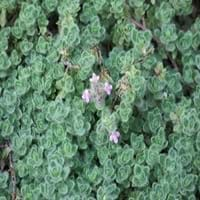Life Span
Perennial
Perennial
Origin
Europe, Mediterranean, Northern Africa, Asia
Europe, Southern Asia, Western Asia
Types
Not Available
Bigleaf hydrangea, Hortensia, Smooth hydrangea, Oakleaf hydrangea, Annabelle
Number of Varieties
Not Available
Habitat
Cultivated Beds
Forest edges, Hillside, Woods
USDA Hardiness Zone
Not Available
Not Available
Sunset Zone
A2, A3, 1a, 1b, 2a, 2b, 3a, 3b, 4, 5, 6, 7, 8, 9, 10, 11, 12, 13, 14, 15, 16, 17, 18, 19, 20, 21, 22, 23, 24
21,22
Habit
Mat-forming
Upright/Erect
Flower Color
Light Pink, Lavender
Yellow, Chartreuse
Flower Color Modifier
Bicolor
Bicolor
Fruit Color
Not Available
Sandy Brown
Leaf Color in Spring
Sea Green, Gray Green
Green, Lime Green
Leaf Color in Summer
Sea Green, Gray Green
Green, Lime Green
Leaf Color in Fall
Sea Green, Gray Green
Several shades of Green
Leaf Color in Winter
Light Green
Light Green
Leaf Shape
Ovate
Oblovate
Plant Season
Spring, Summer, Fall, Winter
Summer, Fall
Sunlight
Full Sun, Partial Sun
Full Sun
Growth Rate
Fast
Very Fast
Type of Soil
Loam, Sand
Clay, Loam
The pH of Soil
Acidic, Neutral
Neutral
Soil Drainage
Well drained
Well drained
Bloom Time
Late Spring, Early Summer, Summer
Summer, Late Summer, Early Fall
Tolerances
Drought
Drought
Where to Plant?
Ground
Container, Ground
How to Plant?
Divison, Seedlings
Seedlings, Stem Planting
Plant Maintenance
Medium
Medium
Watering Requirements
Average Water Needs, Do Not over Water
Not Available
In Summer
Lots of watering
Average Water
In Spring
Moderate
Moderate
In Winter
Average Water
Average Water
Soil pH
Acidic, Neutral
Neutral
Soil Type
Loam, Sand
Clay, Loam
Soil Drainage Capacity
Well drained
Well drained
Sun Exposure
Full Sun, Partial Sun
Full Sun
Pruning
Remove damaged leaves, Remove dead branches, Remove dead leaves
Remove damaged leaves, Remove dead branches, Remove dead leaves
Fertilizers
Fertilize every year
All-Purpose Liquid Fertilizer
Pests and Diseases
Gray mold, Root rot
Red blotch
Plant Tolerance
Drought
Drought
Flower Petal Number
Single
Single
Fragrant Bark/Stem
No
Yes
Foliage Texture
Fine
Fine
Foliage Sheen
Matte
Matte
Attracts
Butterflies
Bees, Flies
Allergy
Skin irritation
Chest tightness, Diarrhea, Dizziness, Nausea, Vomiting
Aesthetic Uses
Borders, Cottage Garden
Not Available
Beauty Benefits
Not Available
Not Available
Edible Uses
Yes
Not Available
Environmental Uses
Air purification
Air purification
Medicinal Uses
Antiseptic, Disinfectant
Fever, Kidney problems, Urinary tract problems
Part of Plant Used
Leaves
Flowers, Root
Other Uses
Used as a flavouring in food, Used as essential oil
Not Available
Used As Indoor Plant
No
Not Available
Used As Outdoor Plant
Yes
Yes
Garden Design
Alpine, Container, Edging, Edible, Herb / Vegetable, Mixed Border, Rock Garden / Wall
Container, Edible, Herb / Vegetable, Mixed Border
Botanical Name
THYMUS pseudolanuginosus
ANETHUM graveolens 'Fernleaf'
Common Name
Wooly Thyme
Dwarf Dill, Fernleaf Dill
In Hindi
Wooly Thyme
Hydrangea
In German
Wooly Thymian
Hortensie
In French
Wooly Thyme
Hortensia
In Spanish
Lanoso Tomillo
Hortensia
In Greek
Wooly Θυμάρι
υδραγεία
In Portuguese
Wooly tomilho
Hortênsia
In Polish
Wooly Tymianek
Hortensja
In Latin
Wooly Thyme
Hibiscus
Phylum
Magnoliophyta
Not Available
Class
Magnoliopsida
Not Available
Order
Lamiales
Not Available
Family
Lamiaceae
Apiaceae
Genus
Thymus
Not Available
Clade
Angiosperms, Asterids, Eudicots
Not Available
Tribe
Not Available
Not Available
Subfamily
Not Available
Not Available
Number of Species
Not Available
Not Available
Importance of Wooly Thyme and Fernleaf Dill
Want to have the most appropriate plant for your garden? You might want to know the importance of Wooly Thyme and Fernleaf Dill. Basically, these two plants vary in many aspects. Compare Wooly Thyme and Fernleaf Dill as they differ in many characteristics such as their life, care, benefits, facts, etc. Every gardener must at least have the slightest clue about the plants he wants to plant in his garden. Compare their benefits, which differ in many ways like facts and uses. The medicinal use of Wooly Thyme is Antiseptic and Disinfectant whereas of Fernleaf Dill is Fever, Kidney problems and Urinary tract problems. Wooly Thyme has beauty benefits as follows: Not Available while Fernleaf Dill has beauty benefits as follows: Not Available.
Compare Facts of Wooly Thyme vs Fernleaf Dill
How to choose the best garden plant for your garden depending upon its facts? Here garden plant comparison will help you to solve this query. Compare the facts of Wooly Thyme vs Fernleaf Dill and know which one to choose. As garden plants have benefits and other uses, allergy is also a major drawback of plants for some people. Allergic reactions of Wooly Thyme are Skin irritation whereas of Fernleaf Dill have Chest tightness, Diarrhea, Dizziness, Nausea and Vomiting respectively. Having a fruit bearing plant in your garden can be a plus point of your garden. Wooly Thyme has no showy fruits and Fernleaf Dill has no showy fruits. Also Wooly Thyme is not flowering and Fernleaf Dill is not flowering . You can compare Wooly Thyme and Fernleaf Dill facts and facts of other plants too.


